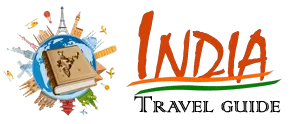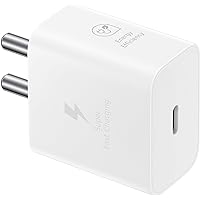India is land of colours, of festivals and of celebrations. It has a very rich and diverse cultural heritage. Festivals and fairs are a good excuse for people to celebrate life. India has festivals to celebrate every season. Every festival has a legend behind it depicting the victory of good over evil that teach moral lessons to the masses.
India is famous for its several religious fairs and festivals. Different states in India have harvest festivals under different names. It is Bihu in Assam, Onam in Kerela, Pongal in Assam, Lohri and Baishakhi in Punjab. During Onam in kerala, rivers swell with the mansoon rains. Long boats manned by hundred oarsmen compete with each other on the Pamba River. Boats are painted in the colours of their proprietors. The spectators chant in rhythm. During the festival of Pooram, there is a procession of elephants in battle formation. The Surajkund Mela in Delhi is another famous yearly fair. The Rath Yatra of Lord Vishnu in Puri attracts millions of spectators. The Kumbh Mela of Allahabad takes place once in four years. Devotees from all over the country come to attend this famous event. The camel Fair at Pushkar and the Goan Carnival are also famous events in the Indian calendar.
The festival year in India begins with the onset of ‘Vasant’- the spring season in India. It marks the end of the chilly winter in north India. On the fifth day of the month of Vasant is Vasant Panchmi dedicated to the worship of Goddess Saraswati- the Goddess of learning. On this day everyone wears a special yellow outfit. After this day, one can see new leaves on the trees and plenty of flowers all around. It is the best season of the year marked by cool weather and blossoming flowers and fruits.
Holi comes at the end of this cool season. It marks the onset of summer. Holi is one of the most popular festivals of India. On this special day, people throw colors at each other and celebrate life. This is one festival that is truly democratic in nature as every one is painted in the same color unrecognized by their caste, creed or social status. On the eve of Holi, bonfires are lit to celebrate the victory of good over evil. As the legend has it, Holi was the occasion when devout little Prahlad could not be burned by the fires when his jealous father and aunt tried to burn him to death. Instead of him it was his aunt Holika who got burned and died. The truth and devotion of Prahlad saved him from all adversities. Even today the burning of the evil Holika is re-enacted to celebrate the triumph of Prahlad. Holi is also associated to the raaslila of Raadha and Krishna and has inspired some of the most sensuous Hindi poetry.
After a long and parched summer comes the much awaited Sawan or Mansoon- the rainy season. Anxious eyes that have scanned the skies for a sign of clouds feel overwhelmed by the oncoming of the rains. At various places small and big fairs are organized to celebrate the season of Saawan. Worshippers of Lord Shiva avoid eating non vegetarian foods during this season according to the dictates of the Hindu religion.
Rakhsha Bandhan celebrated on the last day of saawan is a festival that celebrates the bond between a brother and sister. The brother pledges to protect his sister from all odds through out his life and the sister ties a thread around his wrist as a pledge of her love. This tradition has continued from the days of kings and queens, when Rani Padmavati sent a Rakhi to the then Mughal ruler Humayun asking him to be her brother and protect her. Humayan kept the promise and the tradition has been kept by the generations to come. Even today all brothers and sisters in India observe this ritual.
Janmashtami and Ganesh Chathurthi are religious festivals that celebrate the birth of well loved deities. The birth of lord Krishna is celebrated on Janmashtami. Ganesh Chaturthi is celebrated with great pomp and show in northern and western parts of India. In the months of September- October comes Dussehra. It heralds the planting season. The female deity Goddess Durga is worshipped in a ten day long festival. It celebrates the victory of Goddess Durga over the Mahishasura- an evil demon that was blessed that he could not be killed by any man or God. Dussehra also celebrates the victory of Rama over Ravana. Effigies of Ravana and his brothers are burnt amidst celebrations. Dussehra is celebrated differently in different parts of the country. While in north western parts it is mostly celebrated by enactment of the mythical legends accompanied by folk singing and dancing. In the eastern parts, especially Bengal it is a time for connecting with the divine Goddess.
Dusshera is closely followed by Diwali – the festival of lights. Diwali is always celebrated on a new moon night. It is a time for the Hindus to clean their houses and light little earthen lamps in every nook and corner of the house. It is done to ward off evil spirits and invite Goddess Laxmi – the Goddess of wealth and prosperity to reside in the house. Diwali also marks the return of Ram to his home after defeating Ravana and rescuing Sita. Diwali is the most extensively celebrated festival. Although earthen lamps have been replaced by electric ones, the festival has lost none of its charms. Every house is illuminated by several small lights. Children burst crackers all around. There is happiness and gaiety all around.
Although the enthusiasm of some of the festivals has died down, most of them are still celebrated with great vigor. Some festivals are celebrated to mark the beginning or end of seasons, or harvest time while some others religious ones that aim towards a communication with the divine. Festivals fill the air with liveliness. There are songs and dances and celebrations all around. People wear new clothes on such occasions, eat the choicest dishes that reflect their culture and take part in fairs and processions. Those who are well off donate clothes and food to the poor.






